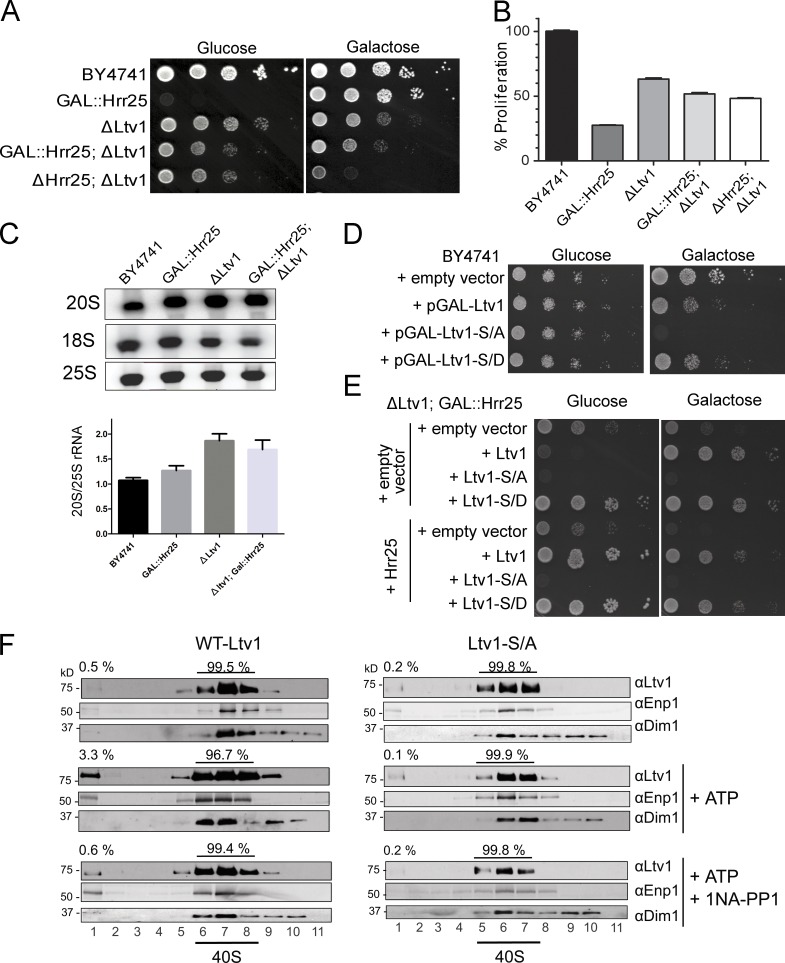Figure 4.
Ltv1 release is the essential function of Hrr25. (A) Growth of wild-type yeast (BY4741), and those with galactose-inducible/glucose-repressible Hrr25 (GAL::Hrr25) or lacking Ltv1 (ΔLtv1), and of double mutant GAL::Hrr25;ΔLtv1 and ΔHrr25;ΔLtv1 cells, was compared. Fig. S2 B has a close-up to compare colony size. (B) Growth rates of wild-type, GAL::Hrr25,ΔLtv1, and GAL::Hrr25;ΔLtv1 yeast cells, as determined by their doubling times in YPD. All measurements were done in triplicate, and error bars show the standard deviation of these data. (C) Northern blot analysis of the 18S rRNA precursor (20S) and 25S rRNA. The quantitation shown below the data is the mean and standard deviation from four independent experiments. (D) Dominant-negative effects from Ltv1-S/A. Wild-type yeast (BY4741) were transformed with plasmids encoding wild-type Ltv1, Ltv1-S/A, or Ltv1-S/D under a galactose-inducible promoter. Induction of Ltv1 is weakly dominant-negative for wild-type Ltv1 and Ltv1-S/D, and strongly dominant-negative for Ltv1-S/A. (E) Growth of GAL::Hrr25;ΔLtv1 cells carrying plasmids of wild-type or phosphomutant Ltv1, with and without Hrr25, is compared on glucose (no endogenous Hrr25) and galactose-containing (endogenous Hrr25) plates. (F) Alanine mutations in the Ltv1 phosphosite block Enp1/Ltv1 release in vitro. Shown are Western blots of gradient fractions from ΔLtv1;Rio2TAP ribosomes, purified from cells containing Hrr25_I82G, and reconstituted on the calmodulin beads with Enp1–Yar1–Rps3 and wild-type Ltv1 or Ltv1-S/A. The positions of 40S ribosomes and free proteins are indicated.

